Spotlight > Whistle Categories > Multi-Tube > 130 Banks’ Duplex Whistle, Diaphragm Notches
Whistory
Thaddeus C. Banks patented the light weight or thin wall duplex whistle March 29, 1864. This is one of the earliest whistle patents found in the USA. He thereafter assigned the patent to himself and his brother Samuel A. Banks.
His whistles were commonly stamped Banks and brother along with the patent date. Interestingly, this whistle patent was preceded by another single whistle patent he posted the year prior, September 15, 1863, but ante dated to April 26, 1861.
An Identifying Feature of the Banks’ Duplex Whistle
A distinctive feature of this ‘two pipe’ construction is the diaphragm Banks calls ‘notches or slits’ and as they are sometimes referred to as teeth. This feature appears to be used solely by Banks and brother whistles. At some point, B & R starts distributing thin wall duplex whistles with Banks patented designed diaphragms.
Additionally, two three pipe models enter the market utilizing Banks and brother’s patented diaphragms. (911 Pepper catalog, 1914 Clay catalog)
Histories of Thaddeus and Samuel Banks is Not Known
Background on Thaddeus and/or Samuel Banks proves to be elusive. It has not been verified whether they manufactured their whistles or had them made by someone else. This description will attempt to look at a line of whistles over a 50 year period(?) for at least a subject study of the whistles themselves.
It is of interest that the patent describes the possibility of different lengths of pipe models, however the same pipe model is all that has been found. Banks concluding remarks indicate that a multitube model would be possible, but not described.
His efforts clearly were to use a clean note tuned for the larger pipe and a secondary pipe designed to be discordant when combined.
Whistle Classification
| Category | duplex, thin wall triplex |
| Order | unknown |
| Type | signal officer fog whistle steam whistle |
| Class | nickel plated brass |
| Subclass | none |
Whistle Archeology
Exhaustive research on the internet fails to reveal anything. Perhaps through ancestry type research more can be found about genealogy and companies.
Banks’ Duplex Whistle, Patents
Going ahead with patent information will have to suffice for now, with revisions in the future.
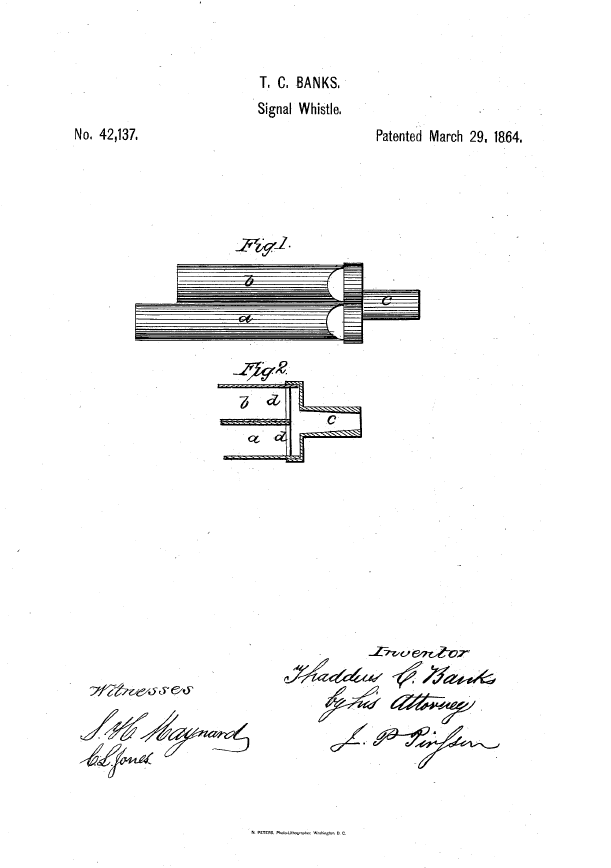
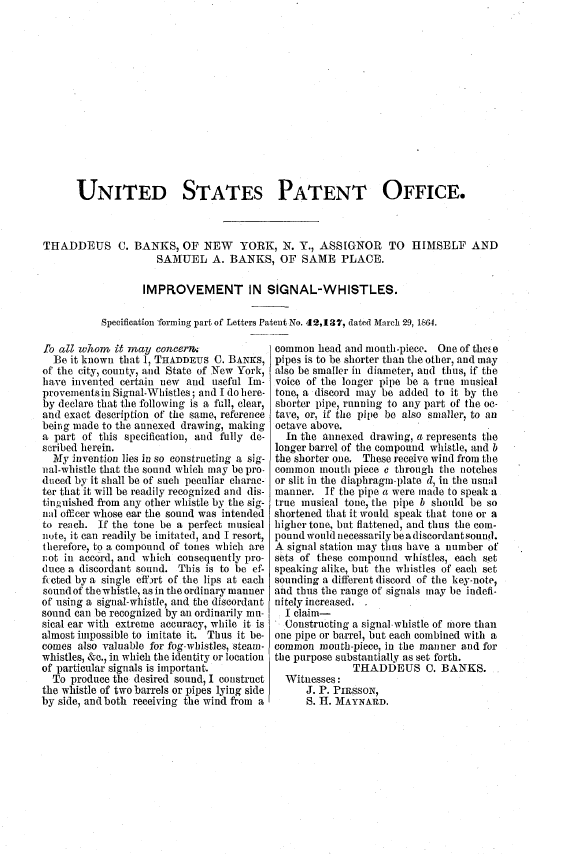
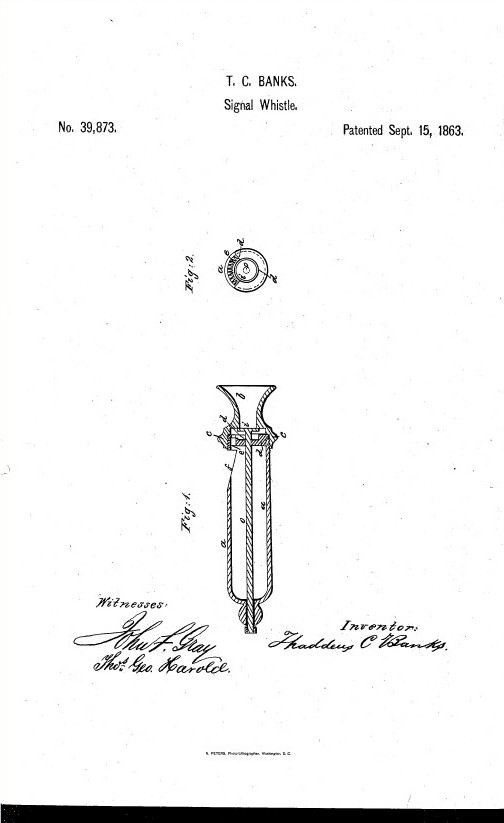
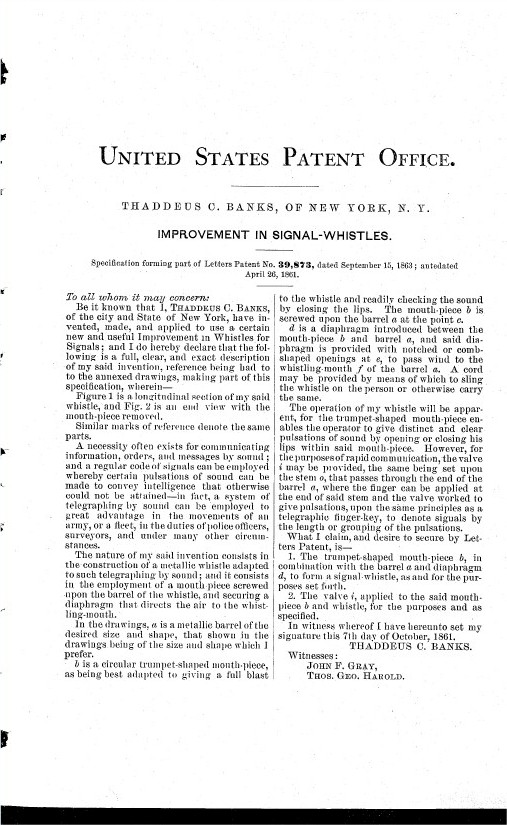
Whistology
Here are two models matching Banks’ patent data. Note the very rounded ends to the pipes, later they would flatten off more.
Although different pipe lengths were described, none have surfaced for view.
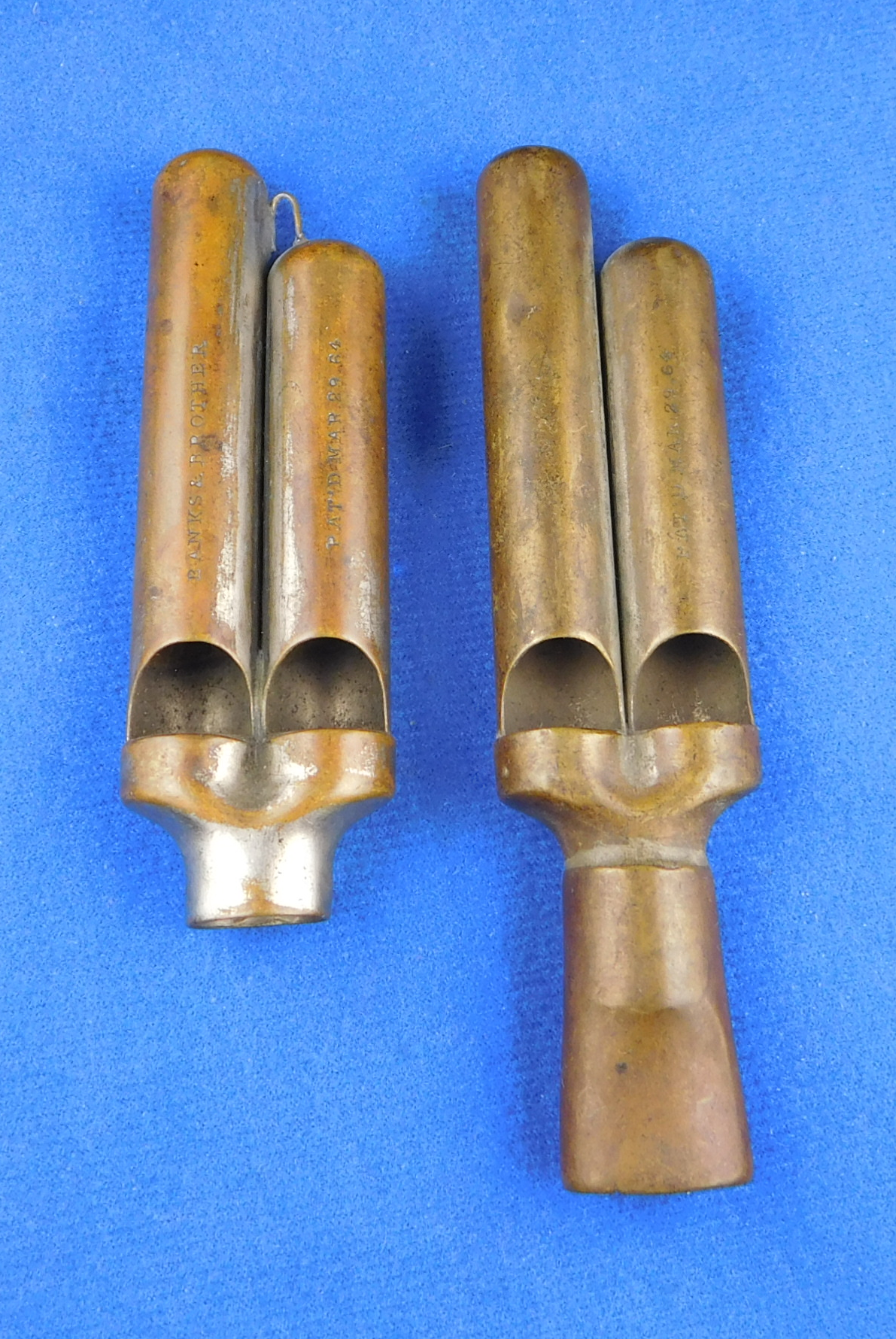
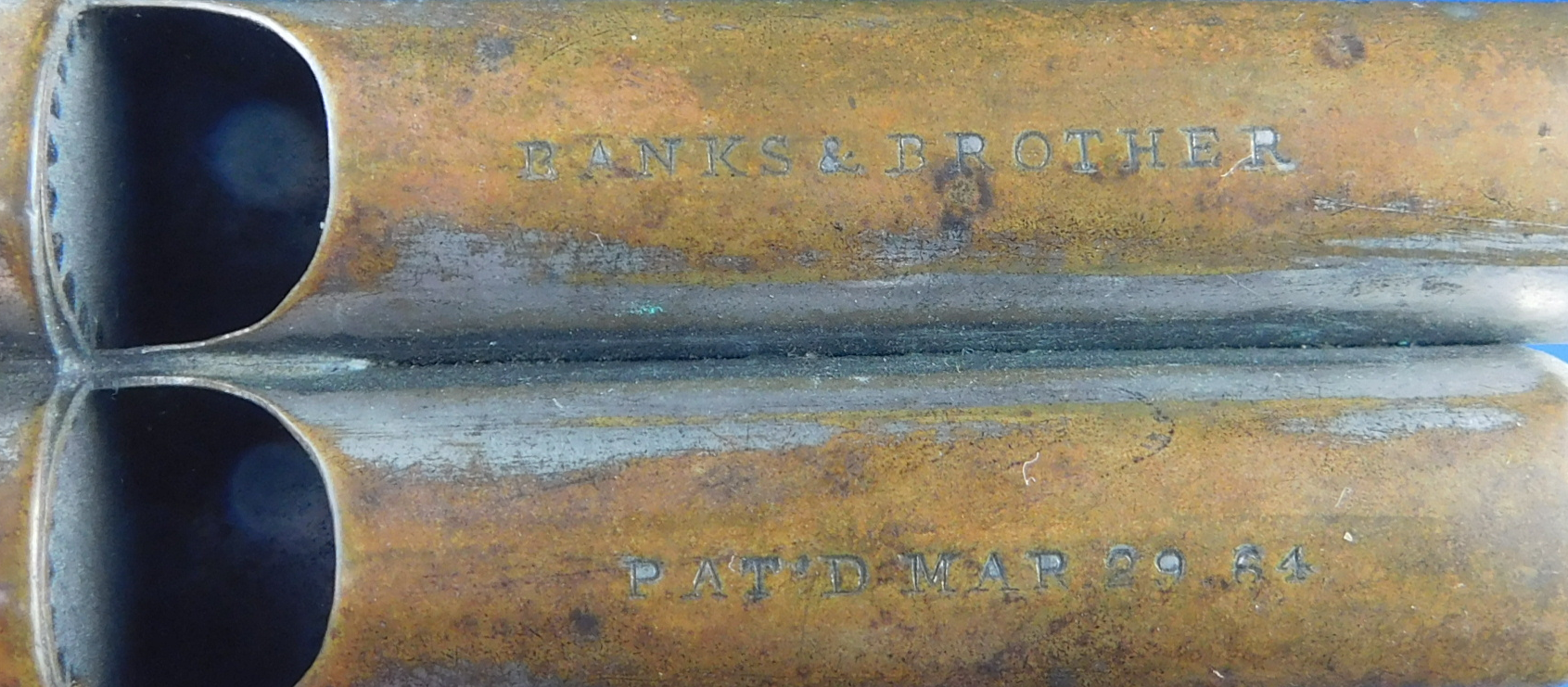
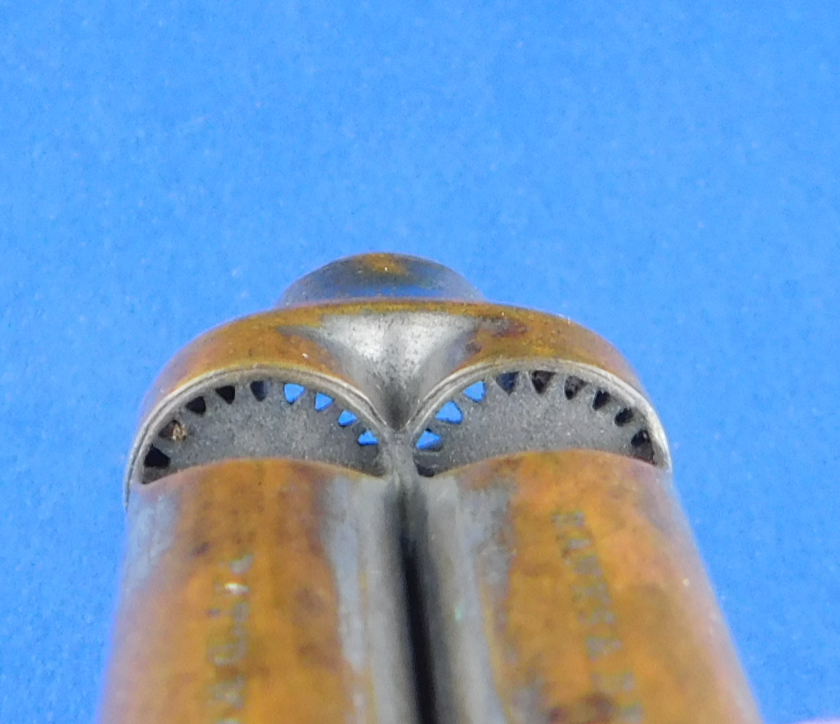
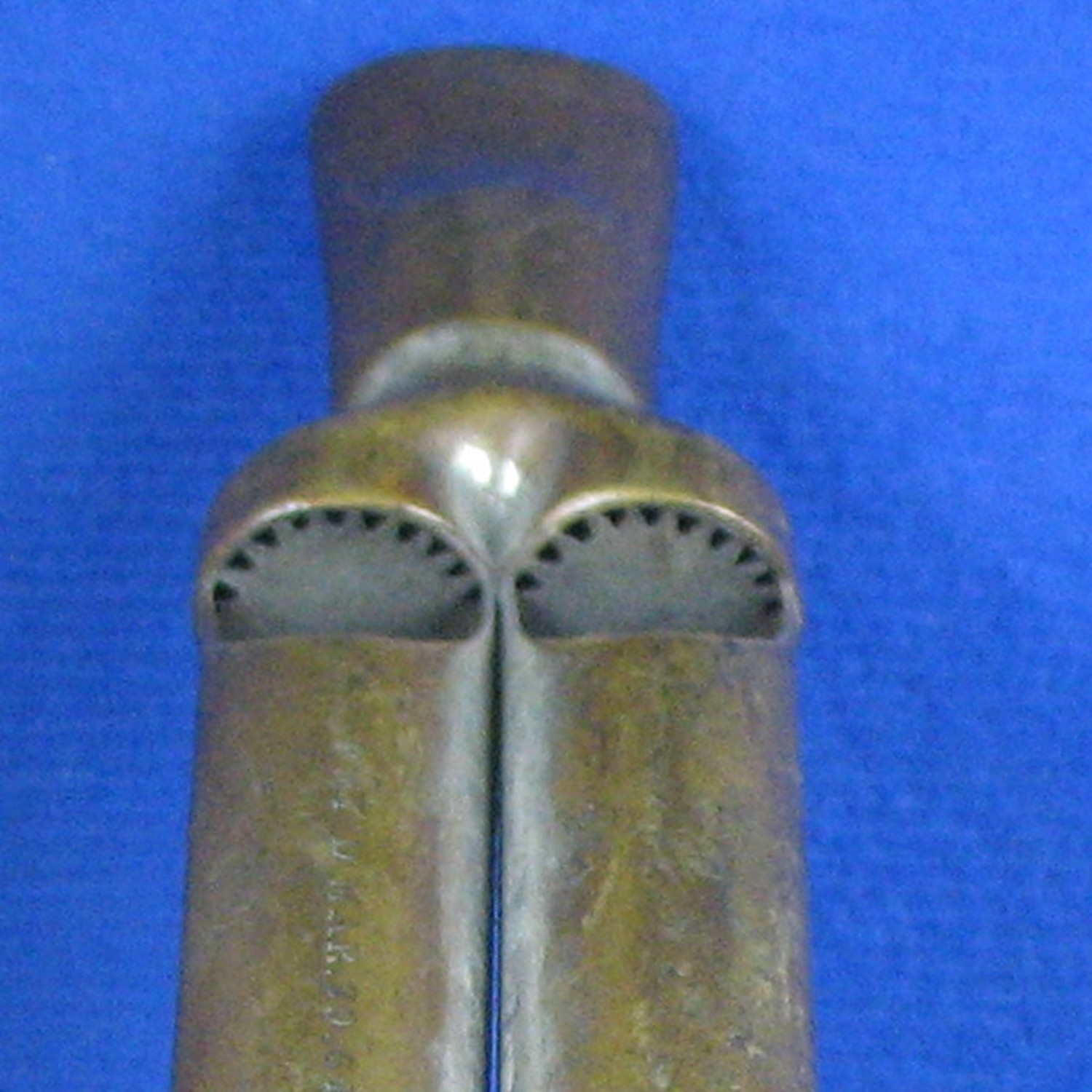
Variations are very slight. Mouthpieces, window cuts and pipe ends are all very subtle.
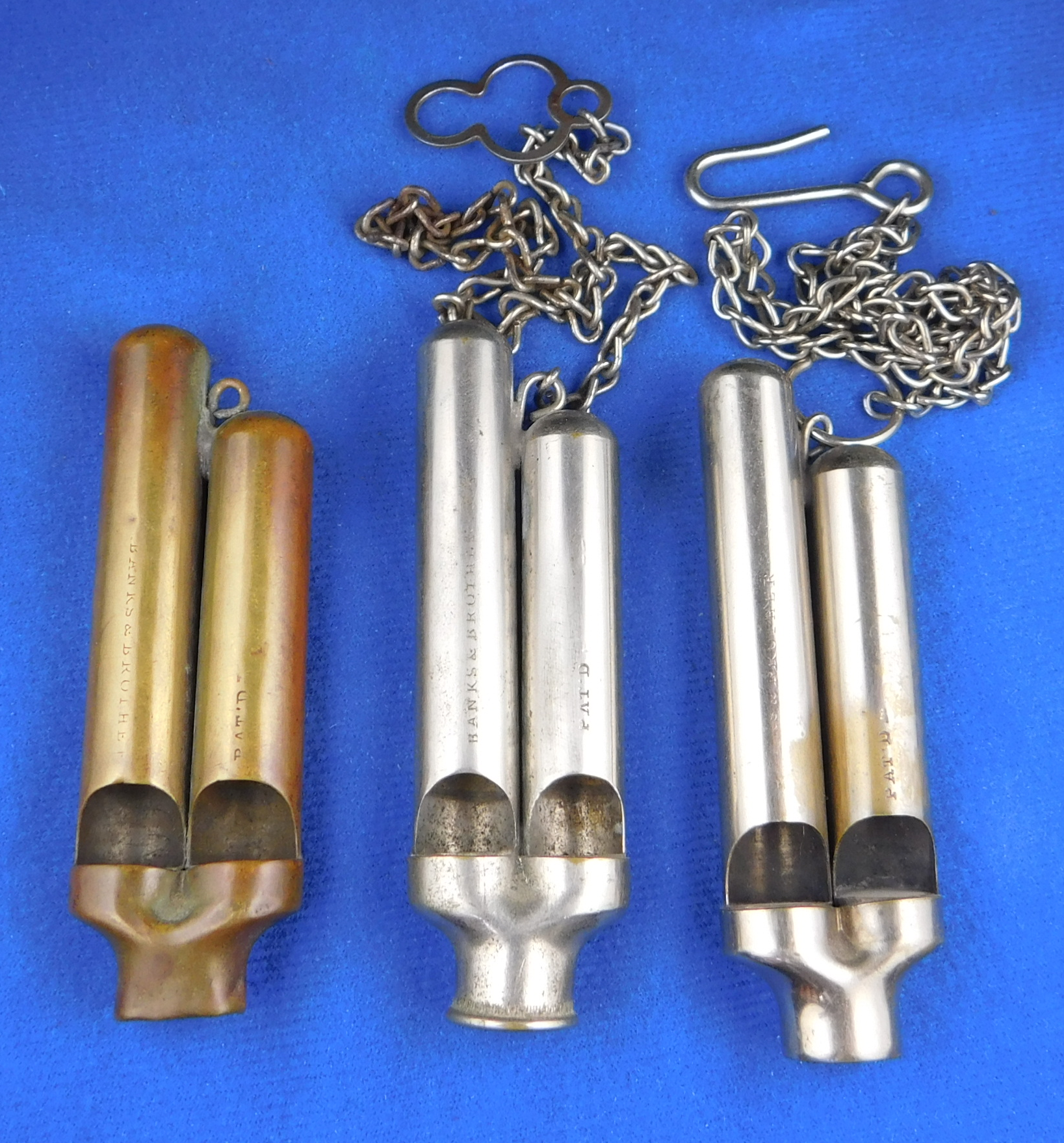
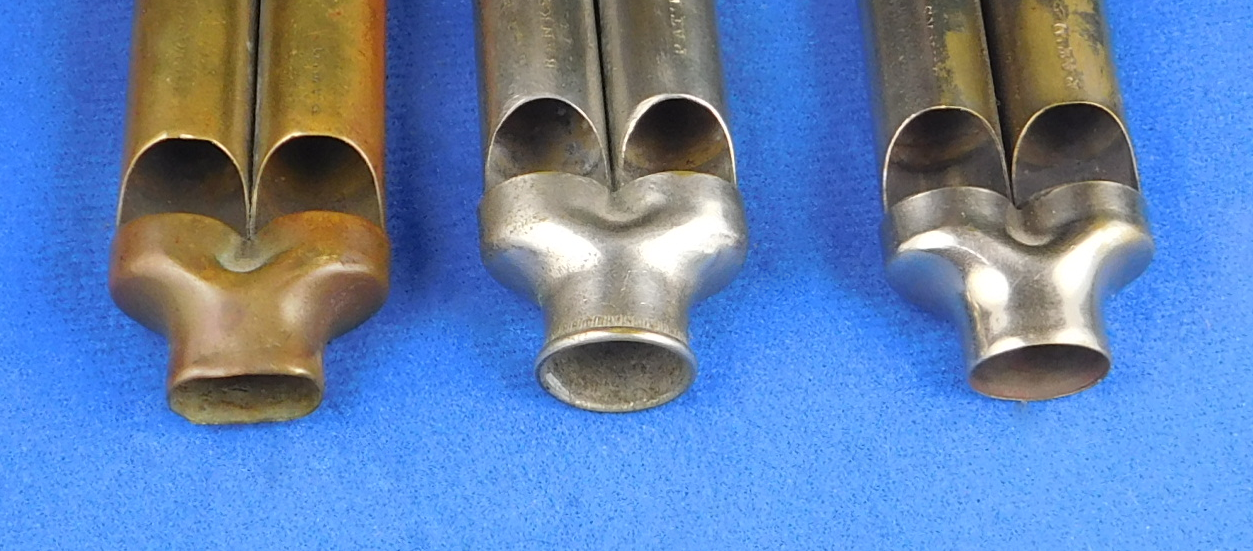
B & R, Variations Point to Banks’ Duplex Whistle Patent
With the advent of B & R (distribution) came slightly more variations in the bodies, the most identifying would be the mouthpiece opening, as this would be also seen in two triplex whistles. Combined characteristics all point to the Banks’ and brother patent.
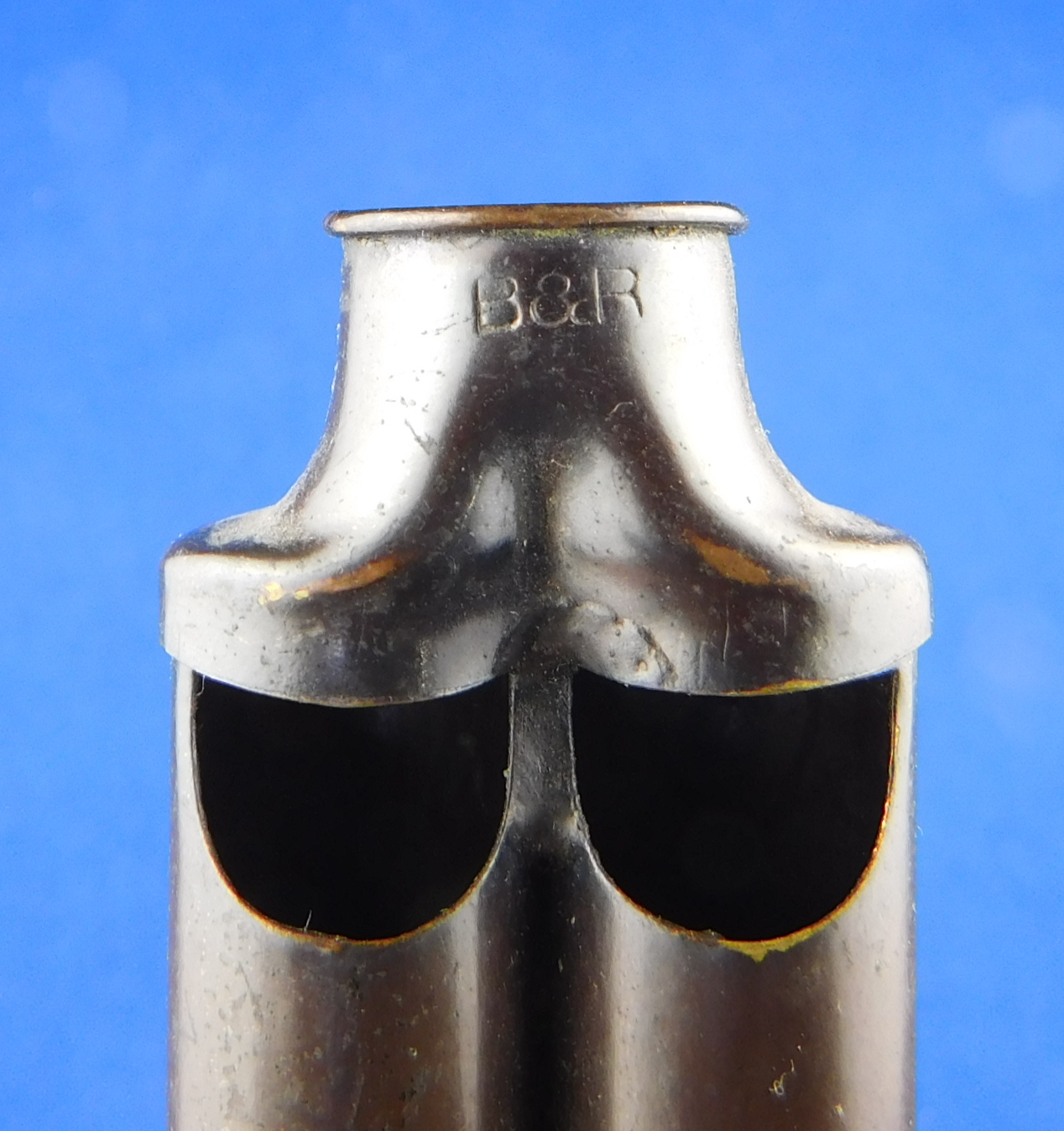
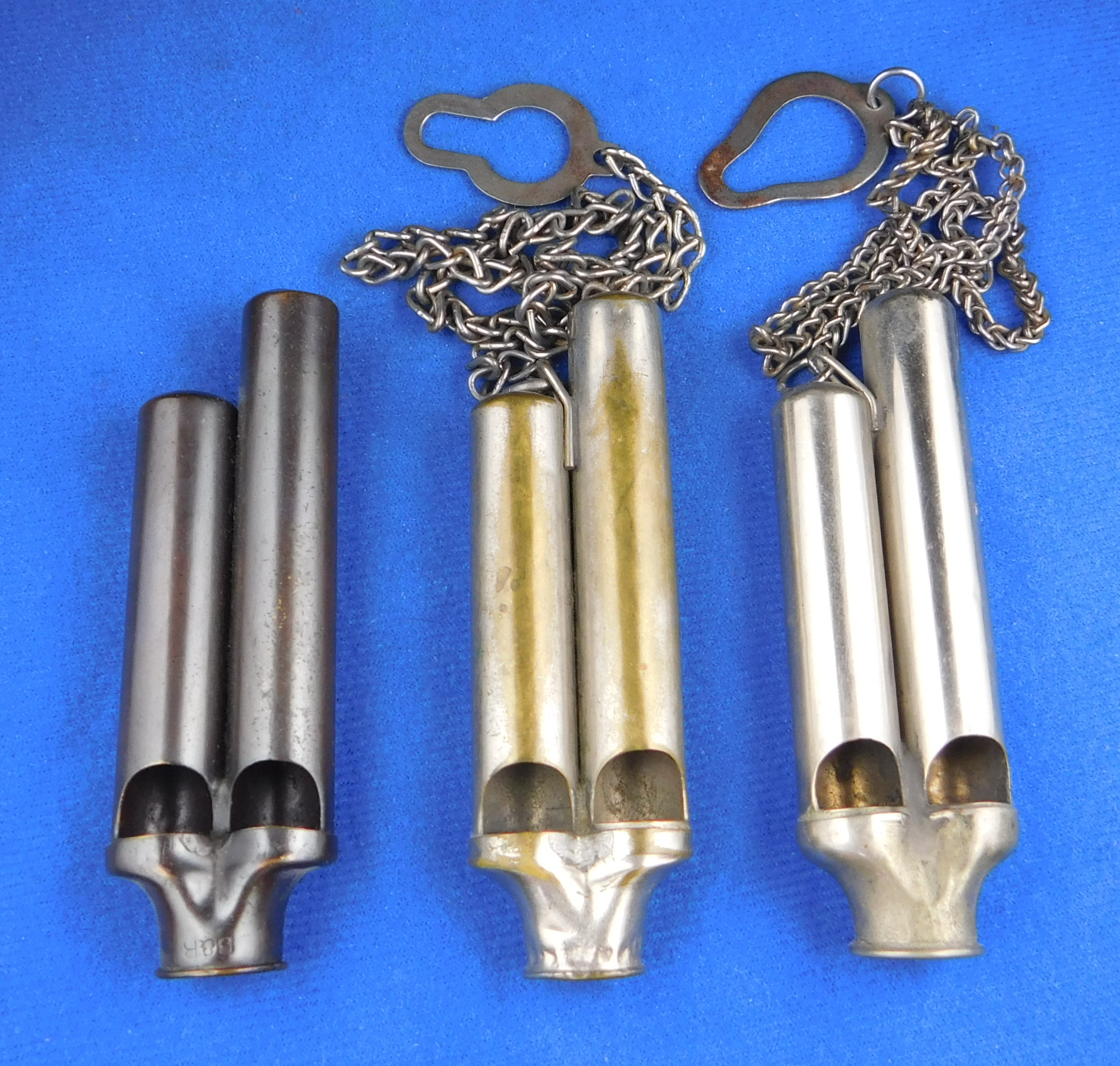
The two models of triplex whistles match up to the typical notched design of the diaphragms.
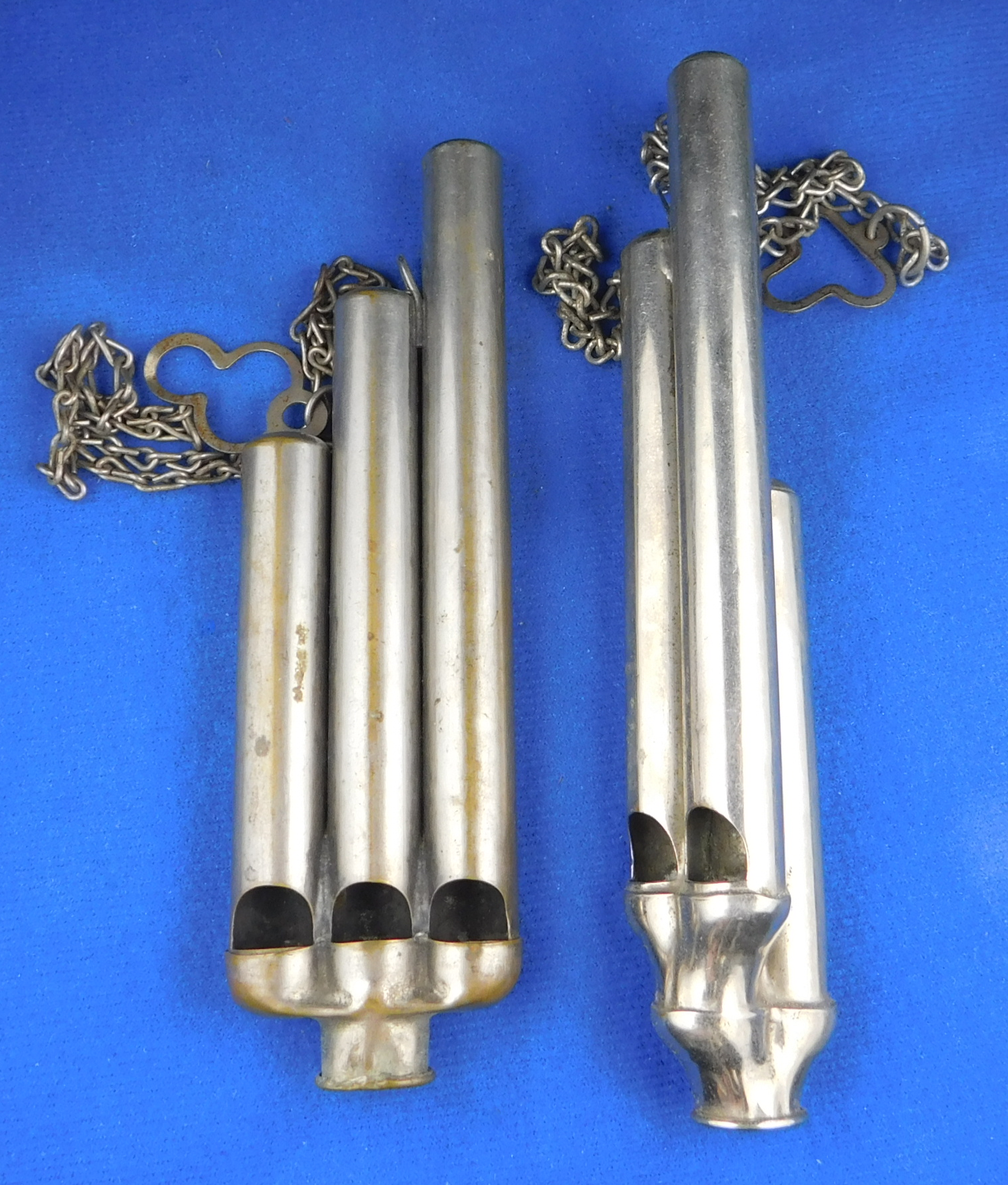
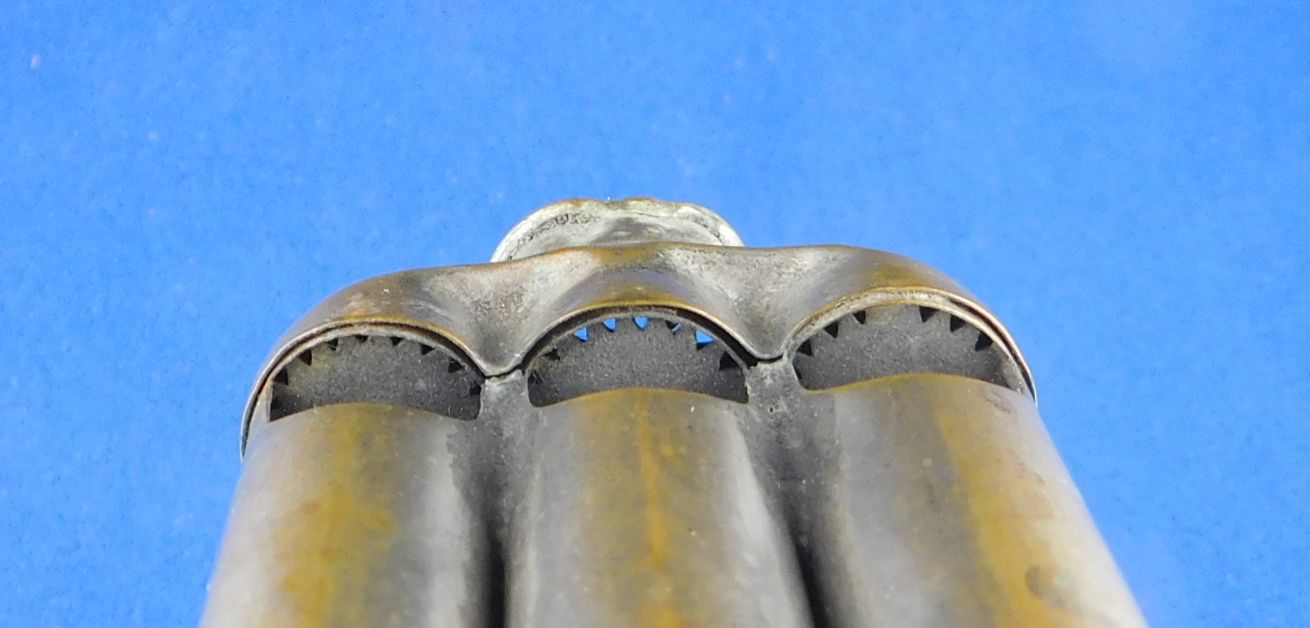
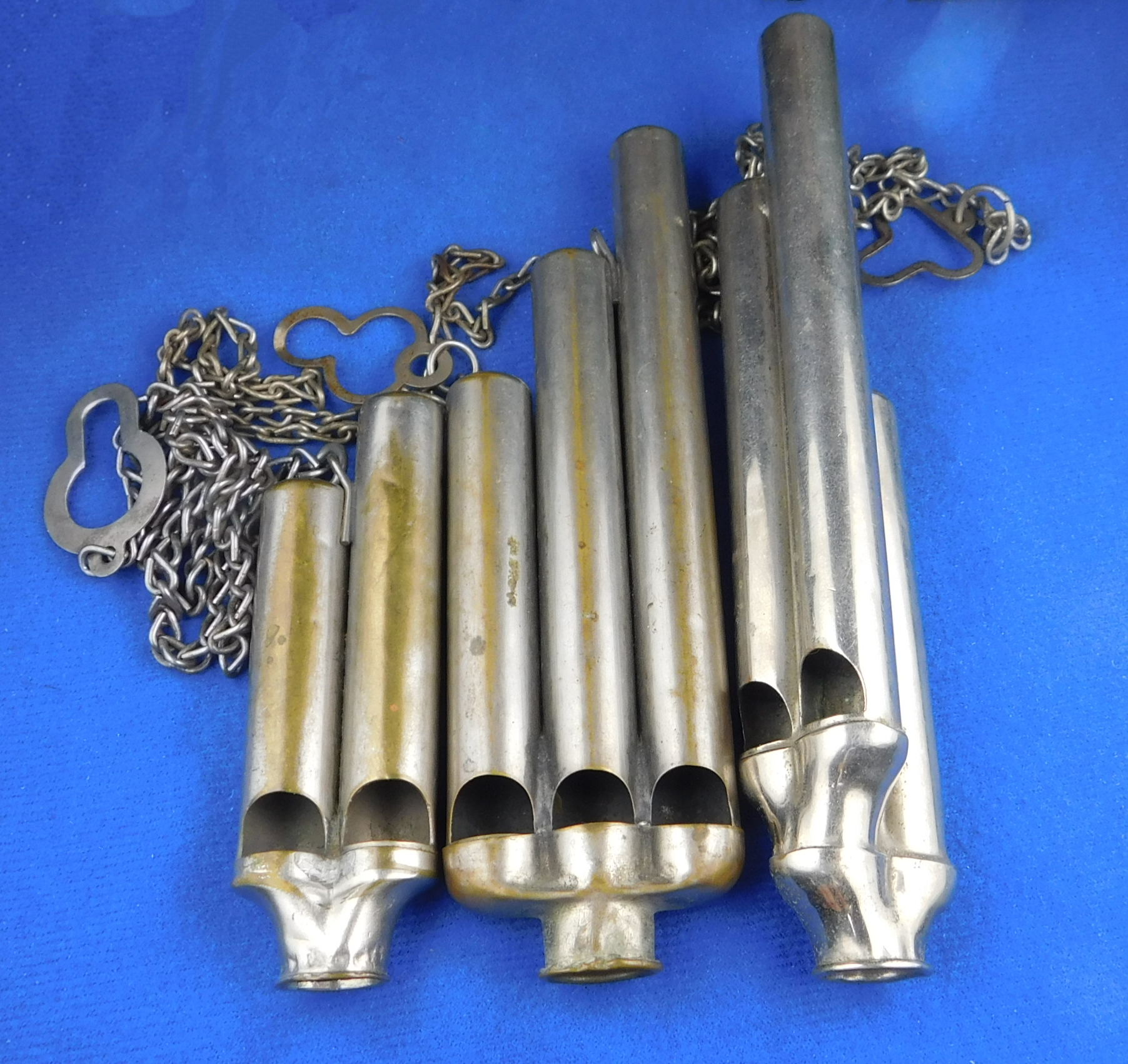
Conclusions:
The current dearth of information of Thaddeus and Samuel Banks leaves a hole in research.
The teeth described in Banks’ patented diaphragm called notches or slits, amount to a defining characteristic in these duplex and triplex whistles.
Who made them for Banks and brother remains unknown, as well as who made them for B & R (Behrend and Rothschild – See Spotlight Number 86) remains a mystery.
All other makers would forgo this feature, simplifying it to a mere fold or wide opening.
TWG
Posted 4 4 2022
Bibliography:
Google Docs
The Whistle Gallery reference collection








